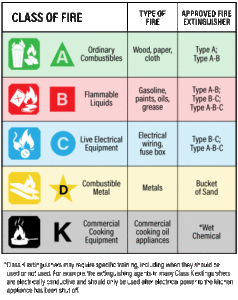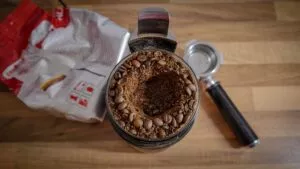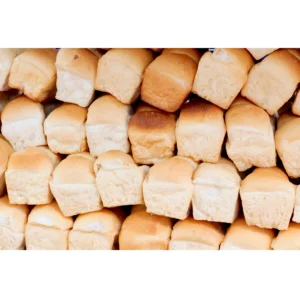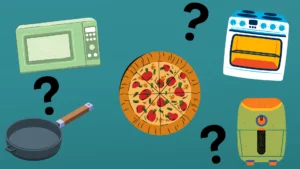
Kitchen Safety Guide: Essential Cooking Safety Standards
Being safe in the kitchen isn’t all about putting out grease fires and avoiding cutting yourself with a knife. It also involves knowing how to avoid cross-contamination, knowing how to hygienically store your food items, and even knowing how to appropriately clean all your cookware and kitchenware.
Below, we’ve organized everything you need to know about kitchen safety into several sections so you can easily access the information that you need. Read on to learn all there is to know about kitchen safety measures.
General Safe Kitchen Practices
In this section, you can find basic kitchen safety guidelines to keep in mind before we get into more specific topics.
- Be aware of safety hazards in the kitchen: Take a look around your kitchen and take note of any hazards you notice and how you can mitigate or eliminate them. Here are a few common ones to consider:
- Leaving knives alongside other items in a sink full of soapy water: Knife safety in the kitchen is something to take seriously – in this situation, you or other family members could accidentally cut themselves removing the knives from the sink. Either clean knives immediately, or place in the dishwasher to reduce the risk of cuts.
- Keep knives sharp: As counterintuitive as it sounds, dull knives put you at risk for cuts more than sharp knives will. This guide from AllRecipes can help walk you through various different methods of sharpening.
- Cluttered and/or wet floor surfaces: Tripping or slipping in the kitchen can lead to sprains, burns, broken bones, and other injuries. Be sure to keep your floors clear and to wipe up any spills as soon as possible.
- Roll up loose sleeves: Having clothing hang over your cooking is unsanitary – there’s also a risk of your sleeves catching on fire as well.
- Keep electrical appliances and items away from your kitchen sink and other sources of water: Although this is one of the more obvious kitchen safety tips, it’s still one of the most important ones. Electrocution can lead to severe burns or even death.
- Take note of what is accessible to your children: Kitchen safety for kids can often be unintentionally overlooked. Make sure to set up kitchen safety rules for your children – e.g., only using the stove and oven with adult help. Additionally, make sure to keep knives, other sharps as well as cleaners out of reach or locked away.
- Have emergency numbers easily accessible: Have your local emergency number as well as your local poison control number on hand in case an accident in the kitchen occurs. One common place many households place such numbers are on the kitchen fridge.
- Use visual aids to help promote kitchen safety: For example, consider printing a poster that teaches about food safety and placing it in an easily visible area of your kitchen. For example, take a look at this food safety poster created by the Government of Canada – it goes over a few basics, plus it also has additional resources for learning more about food safety.
Food Safety Guidelines
Food safety in the kitchen is key to preventing avoidable illnesses. Below, we’ll go through various food safety tips such as food safe temperatures, food hygiene and more.
- Safe food temperatures – This table taken from the Government of Canada shows what temperatures various cuts of meat need to be cooked to ensure thorough cooking and destruction of harmful bacteria. Otherwise, be aware that food can begin growing harmful bacteria between 4 °C and 60 °C, which can lead to food poisoning. As such, keep cold foods at temperatures below 4 °C and hot foods at temperatures above 60 °C. The only way to know the temperature of your foods is to use a food thermometer – going by texture or visual changes is unreliable.
Food Safety Temps (Cooking Raw Meat and Eggs)
| Food | Temperature |
| Beef, veal and lamb (pieces and whole cuts) –medium-rare | 63°C (145°F) |
| Beef, veal and lamb (pieces and whole cuts) —medium | 71°C (160°F) |
| Beef, veal and lamb (pieces and whole cuts) —well done | 77°C (170°F) |
| Pork (pieces and whole cuts) | 71°C (160°F) |
| Poultry (pieces)—chicken, turkey, duck | 74°C (165°F) |
| Poultry (whole)— chicken, turkey, duck | 85°C (185°F) |
| Ground meat and meat mixtures (burgers, sausages, meatballs, meatloaf, casseroles)—beef, veal, lamb and pork | 71°C (160°F) |
| Ground meat and meat mixtures—poultry | 74°C (165°F) |
| Egg dishes | 74°C (165°F) |
| Others (hot dogs, stuffing and leftovers) | 74°C (165°F) |
- Freeze or refrigerate perishable foods within 2 hours of cooking – This lowers the risk of harmful microorganisms growing in your food. However, do note that putting hot food into a refrigerator or freezer directly can raise the temperature of other surrounding foods. As such, it’s advisable to wait for perishable or cooked items to cool at least partially before refrigeration or freezing.
- Store raw foods away from other foods – Avoid contaminating cooked and pre-prepared foods by designating separate food zones for raw and prepared foods. Additionally, place any raw meat or seafood on the bottom shelves of your fridge to avoid raw juices from leaking or dripping onto prepared food.
- Always wash your hands before and after handling food and ingredients such as raw meat – This helps to prevent dirt and pathogens from being inadvertently transferred to your food as well any surfaces you touch after preparing food. This is particularly important for avoiding cross contamination during food handling in regard to food allergies. Appropriate handwashing involves wetting your hands with clean, running water, adding soap to your hands, and lathering it over all the surfaces of your hands (including the backs of your hands, under your nails and in-between fingers), scrubbing your hands for at least 20 seconds and rinsing your hands with clean running water. If you find your hands are dry and cracked from frequent hand washing, keeping a hand cream or lotion such as O’Keeffe’s working hands hand cream can help alleviate your symptoms.
Kitchen Cleaning Guidelines
- Avoid combining multiple chemicals to clean kitchen items and surfaces – By mixing different cleaning substances together, you may inadvertently create harmful gases. Always be sure to read any instructions that come with your cleaning products and to thoroughly wash your hands after using them. For more information regarding household chemicals and how to safely use them, you can browse this resource page from the Government of Canada.
- Clean surfaces in between uses – For example, after you’ve cut chicken on a cutting board, clean the cutting board as well as the knife used with warm soap and water before using it to prepare other foods, especially if those other foods will not be cooked. This is also especially important for avoiding cross contamination when you’re cooking for individuals with food allergies. If possible, it’s best to prepare allergen containing foods on separate surfaces than the ones used for non-allergen containing foods. Additionally, be sure to clean your kitchen sink regularly for the same reasons.
- Wash fruits and vegetables but avoid washing meat, poultry and eggs – According to research conducted by the United States Department of Agriculture, washing meat has the potential to cause cross-contamination in your kitchen. For example, the water used to wash your meat may splatter onto surfaces and items surrounding your kitchen sink. As such, the risk for food borne illnesses such as salmonella or listeria increases. In the case of fruits and vegetables, rinsing these under running water with or without a produce brush should be sufficient – the use of detergents and bleach is unnecessary. Plus, any residue from soap or other cleaning chemicals could lead to nausea, vomiting or other ill side effects.
- Launder or replace your kitchen towels and rags frequently – Commonly forgotten about items in the kitchen include dish towels and other kitchen linens. An article published by Global News recommends that we change out/clean our kitchen towels every other day at minimum, sooner if your towels have come into contact with raw meat or dairy. Additionally, these cloths should be replaced once you notice tears, holes or discolouration.
Kitchen Safety Procedures for Fires and Hot Surfaces
Know how to handle different types of kitchen fires – If you’re ever in any doubt, occupational safety and health departments will often have resources in regard to the appropriate way to extinguish a fire. Below is an infographic provided by the Canadian Centre for Occupational Health and Safety that will tell you about different classes of fires and what fire extinguishers are appropriate to use. 
If you aren’t sure what type of fire is happening in your kitchen, evacuate yourself and anyone else in your home and call the fire department to handle the fire to avoid any further injuries or accidents.
Regardless of the type of fire extinguisher, you can use the following instructions to operate each type:
Use the PASS system – Pull, Aim, Squeeze, Sweep.
- Pull the pin on the extinguisher.
- Aim the extinguisher.
- Squeeze the trigger or top handle.
- Sweep the fire area with the extinguisher’s spray until the fire is completely out.
For floor fires, sweep from the edges in. For wall fires, sweep from the bottom up.
For grease fires, using salt or baking soda is often promoted, although these methods are less ideal than using a fire extinguisher. For one, unless you have a very small fire, you would need quite a copious amount of salt or baking soda to extinguish a grease fire. Additionally, in a high stress situation, you may mistakenly grab baking powder or sugar both of which do nothing to extinguish fires and would likely even exacerbate a fire. Bonus tip: To reduce the likelihood of grease fires, be sure to clean your stovetop regularly to remove any buildup of grease or food residue.
Finally, one last crucial tip for fire safety is always placing yourself between the fire and a clear exit while you use a fire extinguisher so that you’re able to escape if the fire worsens or goes out of control.
- Never assume cooking surfaces or cooking vessels are cool enough to touch – If you’re not sure if a surface or item is cool enough to handle, always err on the side of caution and use oven mitts or several layers of heat resistant towels for handling. If you are using towels, make sure that they’re dry to prevent any burns to your hands.
Deep Fryer Kitchen Safety
- Always read the instructions that come with your deep fryer – The user manual will provide you with key information for safe usage of your deep fryer as well as information for when to cease using your deep fryer (e.g., malfunctions to look out for.)
- Only add oil to a turned off deep fryer/pots or pans that are away from heat – This is to avoid uneven heating of the oil and potential splatters. Additionally, make sure that your deep fryer or pots/pans have been wiped dry, as water can also cause splattering.
- Keep children and pets away from the kitchen when deep frying – Young children and animals aren’t likely to be aware of the risk of being splattered with hot oil during the deep-frying process, so it’s best to put the kitchen off-limits during deep frying.
- Be aware of your oil or fat’s smoke point – Every oil or fat has a smoke point – at this temperature, the fat or oil starts breaking down and burning, smoking, and giving your food a burnt taste. Plus, keeping oil heated at high temperatures for long periods of time can cause fires, so monitor accordingly. Below is a chart provided by MasterClass denoting the smoke point of various different oils and fats:
| Oil | Smoke Point ºF | Smoke Point °C |
| Refined Avocado Oil | 520ºF | 271°C |
| Safflower Oil | 510ºF | 266ºC |
| Rice Bran Oil | 450ºF | 254ºC |
| Refined or Light Olive Oil | 465ºF | 240ºC |
| Soybean Oil | 450ºF | 232ºC |
| Peanut Oil | 450ºF | 232ºC |
| Ghee or Clarified Butter | 450ºF | 232ºC |
| Corn Oil | 450ºF | 232ºC |
| Refined Coconut Oil | 450ºF | 232ºC |
| Sunflower Oil | 450ºF | 232ºC |
| Refined Sesame Oil | 410ºF | 210ºC |
| Vegetable Oil | 400-450ºF | 204-232ºC |
| Beef Tallow | 400ºF | 204ºC |
| Canola Oil | 400ºF | 204ºC |
| Grapeseed Oil | 390ºF | 199ºC |
| Unrefined or Virgin Avocado Oil | 375ºF | 190ºC |
| Pork Fat or Lard | 370ºF | 188ºC |
| Chicken Fat or Schmaltz | 375ºF | 190ºC |
| Duck Fat | 375ºF | 190ºC |
| Vegetable Shortening | 360ºF | 182ºC |
| Unrefined Sesame Oil | 350ºF | 177ºC |
| Extra Virgin or Unrefined Coconut Oil | 350ºF | 177ºC |
| Extra Virgin Olive Oil | 325-375ºF | 163-190ºC |
| Butter | 302ºF | 150ºC |
- Never overcrowd food during deep frying – This can cause undercooking, uneven cooking, and overflow of oil. Refer to our safe food temperature table earlier in this post to see what temperature your food needs to be at for safe consumption.
- Heat oil slowly – Rapidly raising the temperature of your frying oil increases the risk for fires and burns from splattering.
- Pat food dry and add it slowly to your heated oil – As we’ve mentioned earlier, moisture can cause oil to splatter. Additionally, dropping food in can also increase the chances for boiling over and splattering. If you’re worried about being burned by oil when adding food, you can use chopsticks, a metal spoon, or tongs to assist you in the deep-frying process. Never use plastic utensils as they could melt and contaminate your food.
- Never leave heated oil unattended – Generally, you should never leave cooking unattended – in the case of deep frying, boiling over or grease fires are a possibility.
- After cooking, unplug your deep fryer (if applicable) and allow for used oil to cool – After cooling your used cooking oil, you may choose to strain it and store it in an airtight container for future use. Otherwise, pour your cooled oil into a sealable container and dispose of it in your garbage can.
Questions and answers about cooking safety
Why is kitchen safety important?
As the name implies, kitchen safety is important for keeping you safe from preventable hazards and common risks you can encounter in the kitchen. Without it, we would encounter knife cuts, burns, fires, food-borne illnesses, and many other problems in the kitchen.
What is the best way to keep hands free from contamination?
The best way to keep your hands free from contamination is to wash them frequently with soap and water, especially before and after handling ingredients. As a 2011 study published in the National Library of Medicine puts it, gloves are not a substitute for hand hygiene. Although study is referring to glove use by healthcare workers, it’s still relevant for in the kitchen. Individuals who use gloves also often become complacent and have overall poorer hand hygiene. Plus, with poorer hand hygiene, transfer of residues and bacteria from your hands to the surfaces of any gloves you wear is possible, which has implications for cross-contamination and growth of bacteria that causes food borne illnesses.
What are the top 10 kitchen safety hazards?
Here is a generalized list of kitchen hazards that are common occurrences in various households:
- Leaving knives in a sink of water.
- Leaving cooking unattended.
- Cooking with loose sleeves.
- Mixing various cleaning chemicals together to clean your kitchen.
- Using the same cutting board and knives for raw meat and produce.
- Not having a fire extinguisher that is easily accessible.
- Having a cluttered floor.
- Improper storage of food.
- Not teaching children about safety in the kitchen.
- Not cooking meats or other foods to the proper temperatures.
What are some safety rules when using electrical appliances in the kitchen?
As we mentioned in our general safe kitchen practices section, be sure to keep electrical appliances away from any sources of water, particularly near their outlets. Additionally, be aware that plugging in too many appliances into the same outlet can cause a circuit to overload, which can lead to fires. As a general rule, major appliances such as fridges or dishwashers should have their own dedicated wall outlet. For other smaller appliances, ensure that one outlet doesn’t exceed 1500 watts at any one time. If you’re ever unsure about the integrity of the circuitry in your home, contact a qualified professional for advice.
Read more

The Best Coffee Grinders in Canada
Quality beans are essential but the whole secret to the best brew is in the grinder.

The Best Store-Bought Bread Brands in Canada
We covered some of the most popular bread brands that have been on the market for decades and earned approval among Canadians.

The Best Way to Reheat Pizza
Have you ever asked yourself: what’s the best way to reheat pizza? Read this article to find out.

The Best Milk Frothers in Canada
Transform your morning coffee into creamy, rich, and foamy drinks with these milk frothers.
I recently used this site to lay one’s hands on [url=https://synergy3.com/ ]synergy 3[/url] , and I couldn’t be happier with the results. The search was straightforward, and I appreciated the ornate profiles and patron reviews instead of each contractor. It мейд comparing options and reading wide other clients’ experiences easy. The contractors I contacted were coax, professional, and offered competitive quotes. This position is a spectacular resource instead of anyone needing trusty haven renew services. Warmly recommended payment its explicit interface and eminence listings!
I recently used this locality to find https://synergy3.com/hvac/ductless/ , and I couldn’t be happier with the results. The search was straightforward, and I appreciated the ornate profiles and bloke reviews instead of each contractor. It мейд comparing options and reading about other clients’ experiences easy. The contractors I contacted were coax, professional, and offered competitive quotes. This locality is a unbelievable resource for anyone needing safe home form services. Highly recommended in search its simple interface and quality listings!
I recently reach-me-down this locality to allot https://synergy3.com/ , and I couldn’t be happier with the results. The search was straightforward, and I appreciated the ornate profiles and customer reviews in behalf of each contractor. It made comparing options and reading nearly other clients’ experiences easy. The contractors I contacted were willing, efficient, and offered competitive quotes. This milieu is a fantastic resource seeing that anyone needing trusty place form services. Greatly recommended as a replacement for its explicit interface and trait listings!
I recently reach-me-down this site to identify ductless system , and I couldn’t be happier with the results. The search was straightforward, and I appreciated the particularized profiles and customer reviews instead of each contractor. It мейд comparing options and reading nearly other clients’ experiences easy. The contractors I contacted were prompt, licensed, and offered competitive quotes. This milieu is a fantastic resource instead of anyone needing safe home renew services. Warmly recommended as a replacement for its user-friendly interface and trait listings!